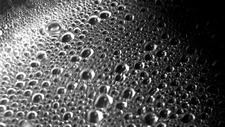Boiling Point of Water (°C)
Supporting

TEKS Objective
Students will identify the boiling and freezing/melting points of water on the Celsius scale.
Essential Understanding
The student knows that (1) matter has measurable physical properties and (2) those properties determine how matter is classified, changed and used.
Science Background
Melting, Freezing and Boiling Point: Purdue University (website) - Explanations and information about the melting, freezing and boiling points of water and other substances.
Melting, Freezing, and Boiling Point
Purdue University, www.chemed.chem.purdue.edu
Signature Lesson
What’s the Point? Connecting to Unifying Concepts through Physical Science (PDF) - This lesson helps students understand that boiling and melting points are properties of a substance that remain constant.
- Supporting Lessons
- Extensions
- Assessment Ideas
- Literature Connections
- Related
TEKS - Additional Resources
Supporting Lessons
A Matter of State: Science NetLinks (website) - By observing the behavior of hot water in a plastic milk container, students learn about the effects of temperature on particle movement.
A Matter of State
Science NetLinks, http://sciencenetlinks.com
Water and Ice: Science NetLinks (website) - Students observe and explore what happens to water as it changes from solid to liquid and back to solid, and they identify the freezing and melting points of water.
Water and Ice
Science NetLinks, http://sciencenetlinks.com
Elaboration Lessons and Extensions
The International Boiling Point Project: CIESE Collaborative Projects (website) - Through collaboration and experimentation, students discover and understand the correlation between elevation and the boiling point of water.
The International Boiling Point Project
by the Stevens Institute of Technology CIESE, www.ciese.org
The Ups and Downs of Thermometers: American Chemical Society (website) - Students learn that the way a thermometer works is an example of heating and cooling a liquid.
The Ups and Downs of Thermometers
by the American Chemical Society, www.middleschoolchemistry.com
Assessment Ideas
Give students the following list of substances and their boiling points. Have students rank the substances from highest to lowest boiling point, and identify which substances have lower boiling points than pure water and which ones have higher boiling points than pure water.
Olive oil:300° C
Sea water:100.7° C
Freon (refrigerant used in air conditioner units): 23.8° C
Rubbing alcohol: 97.5° C
Glycerine: 290° C
Literature Connections
Melting, Freezing, and Boiling: Science Projects with Matter, Gardner, R. (ISBN-13: 9780766025899)
Water as a Gas. Frost, Helen (ISBN: 978-0736848763)
Solid, Liquid, or Gas? Hewitt, Sally (ISBN: 978-0516263939)
Solids, Liquids, Gases. Simon, Charnan (ISBN: 978-0756509767)
Additional Resources
Changing State: BBC Schools Science Clips (website) - Experiment virtually with water as it changes from a solid to a liquid; observe what happens to gasses in a container.
Changing State
by the British Broadcasting Corporation, www.bbc.co.uk
TEKS Navigation
Grade 5
User Information
Not Registered Yet?
Sign Up Today!
Related Resources
Need Assistance?
If you need help or have a question please use the links below to help resolve your problem.

Comments